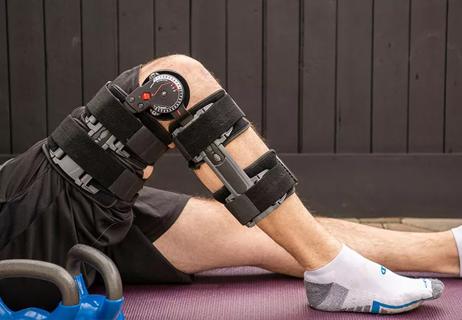Follow guidelines to limit pitches, rest between games

Most youth baseball organizations today limit pitch counts or require days of rest after a young pitcher’s stint on the mound — or both. And that’s a good thing. Medical research has shown that these rules are a safe way to protect the arms of these young players.
Advertisement
Cleveland Clinic is a non-profit academic medical center. Advertising on our site helps support our mission. We do not endorse non-Cleveland Clinic products or services. Policy
“Kids who start pitching who are not fully grown put tremendous stress on their shoulders and elbows,” says orthopaedic surgeon and pediatric sports medicine specialist Paul Saluan, MD. This can lead to a variety of physical problems, he says.
Little League elbow and Little League shoulder are common problems among adolescent athletes. Other common injuries or issues that affect young pitchers include:
“Kids usually experience shoulder or elbow pain for one of three reasons,” Dr. Saluan says. “Their pitch count is too high, they didn’t rest enough between pitching sessions, or their pitching mechanics are inadequate.”
Advertisement
Fortunately, Little League International, Pony Baseball, Babe Ruth/Ripken Baseball, Dixie Youth League, American Legion Baseball and other youth organizations have implemented rules that limit pitching to prevent these kind of overuse injuries. Many of these rules follow USA Baseball’s Pitch Smart guidelines and limit the number of pitches during a game or require several days of rest between appearances on the mound.
“Injuries to the growth-plate region of the bones in the shoulder and elbow can be minimized with proper adherence to pitching guidelines and review of proper pitch mechanics,” Dr. Saluan says.
A pitch count controls the overuse stresses that accumulate over time in young pitchers, he says. Mandating rest periods between games allows the body an appropriate recovery period between pitching sessions.
“If a player wants to improve their performance level the best approach is to have adequate recovery, and these guidelines allow that,” Dr. Saluan says.
There are other strategies a player can use to avoid injuries aside from limiting pitches and proper intervals between games.
Proper warm up before an outing is critical. A warm-up should begin with a light jog, followed by functional movements such as side shuffles or a high knee run, in addition to trunk rotation and upper extremity stretches.
General soreness is not uncommon in young pitchers. However, “if an athlete experiences more pain than the usual muscle soreness, or if sharp pain occurs while throwing the ball hard, it’s time to see the doctor,” Dr. Saluan says.
Reviewing the young pitcher’s throwing mechanics also is important, and while the coach can be a good source of advice, professional, medical-based help also is available to improve performance and keep the athlete injury-free.
A good sports performance program offers customized video analysis of pitching motion, with specific drills that address each athlete’s deficiencies, functional training and conditioning, and should offer injury prevention and rehabilitation for young pitchers in baseball and softball, Dr. Saluan says.
Each injury is unique and should be treated as such by a sports medicine professional, he says.
“The key is addressing each injury individually,” he says. “No two injuries are the same.”
Advertisement
Learn more about our editorial process.
Advertisement

How to bounce back when a gymnastics injury has sidelined you

Help your gymnast stay healthy and strong with proper training and nutrition

Sports medicine physicians can get you back on track

How to exercise as you age

And 5 common mental blocks after injury

Young athletes see back, hip and leg injuries

Elastic therapeutic tape can provide extra support, but it can’t improve your stats

Proper form is important when pivoting, turning and landing

Type 2 diabetes isn’t inevitable with these dietary changes

Applying a hot or cold compress can help with pain